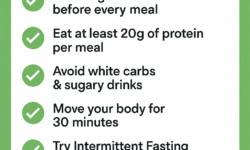Your First Step Towards Homeownership: Navigating the Mortgage Process
Buying your first home is an exciting milestone, marking a significant step towards financial independence and stability. However, navigating the mortgage process as a first-time homebuyer can feel overwhelming, with countless terms, options, and considerations to understand. In this comprehensive guide, we’ll walk you through the essential steps of obtaining a mortgage, empowering you to make informed decisions and achieve your dream of homeownership with confidence.
1. Assess Your Financial Readiness:
Before diving into the mortgage process, take a realistic look at your financial situation to determine your readiness for homeownership. Consider factors such as:
- Credit Score: Check your credit score and address any issues or discrepancies to improve your chances of qualifying for a favorable mortgage rate.
- Debt-to-Income Ratio: Calculate your debt-to-income ratio to assess your ability to afford mortgage payments alongside existing debts and expenses.
- Down Payment: Determine how much you can afford to put towards a down payment, aiming for at least 20% to avoid private mortgage insurance (PMI) and qualify for better loan terms.
- Closing Costs: Budget for closing costs, which typically range from 2% to 5% of the home’s purchase price, covering fees such as appraisal, inspection, and title insurance.
2. Get Pre-Approved for a Mortgage:
Obtaining pre-approval for a mortgage is a crucial step in the homebuying process, demonstrating to sellers that you’re a serious and qualified buyer. To get pre-approved:
- Gather Documentation: Prepare financial documents such as pay stubs, tax returns, bank statements, and proof of assets to support your mortgage application.
- Shop Around: Compare mortgage offers from multiple lenders to find the best rates, terms, and loan options for your needs.
- Submit Application: Complete a mortgage application with your chosen lender, providing accurate information about your income, assets, debts, and employment history.
- Receive Pre-Approval: Upon review of your application, the lender will issue a pre-approval letter indicating the maximum loan amount you qualify for, subject to underwriting approval.
3. Understand Mortgage Options:
There are various types of mortgages available to first-time homebuyers, each with its own terms, requirements, and benefits:
- Fixed-Rate Mortgage: Offers a stable interest rate and monthly payment throughout the loan term, providing predictability and long-term affordability.
- Adjustable-Rate Mortgage (ARM): Features an initial fixed interest rate period, followed by periodic adjustments based on market conditions, potentially resulting in lower initial payments but increased risk of payment fluctuations.
- FHA Loan: Insured by the Federal Housing Administration, FHA loans offer low down payment requirements (as low as 3.5%) and flexible qualification criteria, making them popular among first-time buyers with limited funds or lower credit scores.
- VA Loan: Reserved for eligible veterans, active-duty service members, and qualified spouses, VA loans offer competitive interest rates, no down payment requirements, and lenient credit standards, providing significant benefits for those who qualify.
4. Compare Mortgage Rates and Terms:
When evaluating mortgage offers, consider factors such as:
- Interest Rate: Compare interest rates from different lenders to find the most competitive offer, as even a slight difference in rate can have a significant impact on your monthly payments and overall loan cost.
- Loan Term: Decide on a loan term that aligns with your financial goals and budget, choosing between shorter terms (e.g., 15 or 20 years) for faster equity buildup and lower interest costs, or longer terms (e.g., 30 years) for lower monthly payments.
- Points and Fees: Evaluate the impact of discount points, origination fees, and closing costs on your loan, considering whether paying upfront fees in exchange for a lower interest rate is beneficial in the long run.
5. Prepare for the Closing Process:
Once you’ve chosen a mortgage lender and selected a home, you’ll proceed to the closing process, where the final details of the mortgage transaction are completed. To prepare for closing:
- Review Loan Documents: Carefully review the loan documents, including the Loan Estimate (LE) and Closing Disclosure (CD), to ensure accuracy and transparency of terms and fees.
- Schedule Home Inspection: Arrange for a professional home inspection to evaluate the property’s condition and identify any potential issues or concerns before closing.
- Secure Homeowners Insurance: Obtain homeowners insurance coverage to protect your investment and satisfy lender requirements, providing documentation of coverage to your lender prior to closing.
- Prepare Funds: Set aside funds for closing costs and the down payment, ensuring sufficient funds are available in your bank account for wire transfer or cashier’s check on the closing day.
Conclusion:
Navigating the mortgage process as a first-time homebuyer may seem daunting, but with careful preparation, research, and guidance, you can successfully secure a mortgage and achieve your homeownership goals. By assessing your financial readiness, getting pre-approved for a mortgage, understanding mortgage options, comparing rates and terms, and preparing for the closing process, you’ll be well-equipped to embark on your journey towards owning your dream home. Remember to seek advice from trusted real estate professionals and mortgage experts to guide you through each step of the process and ensure a smooth and rewarding homebuying experience. Happy house hunting!



